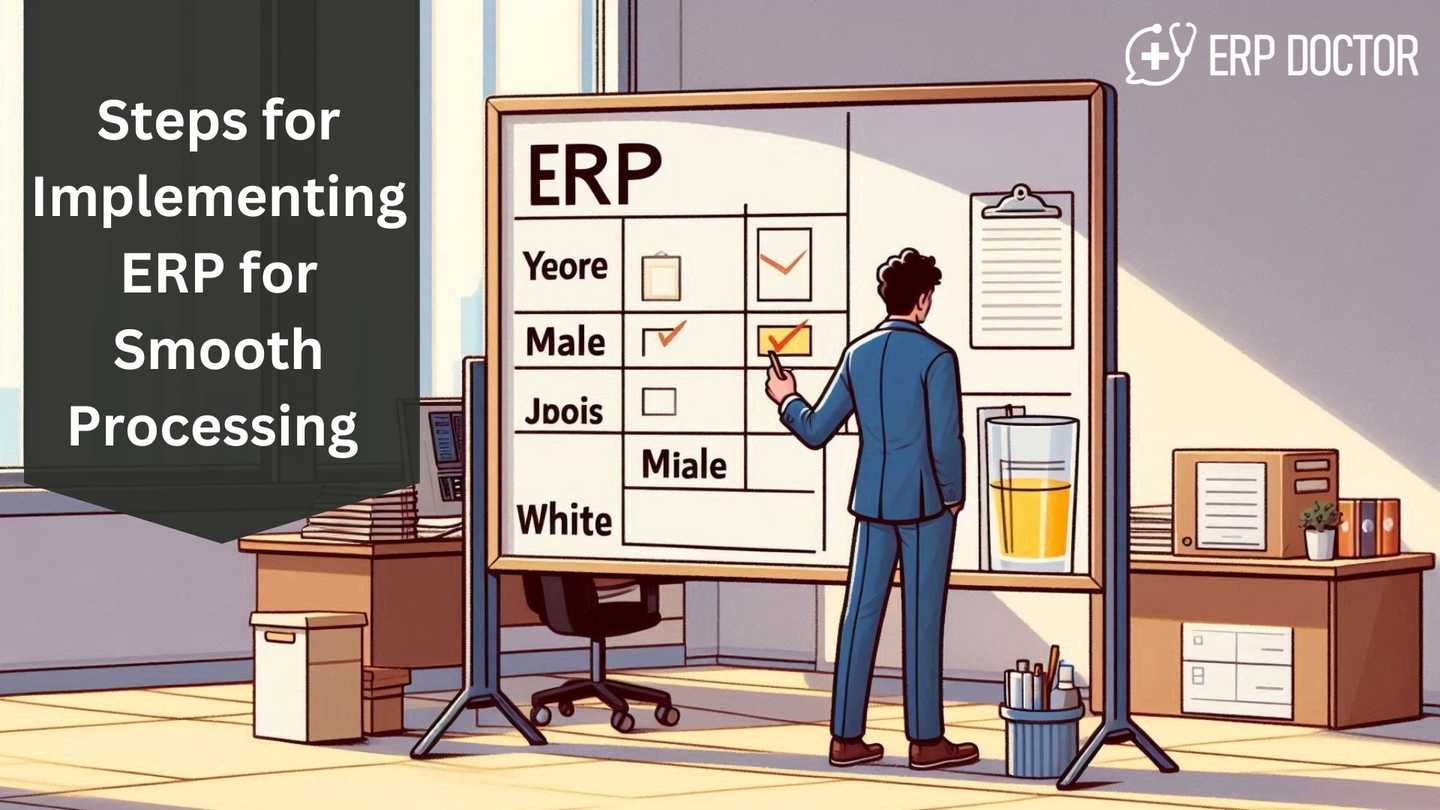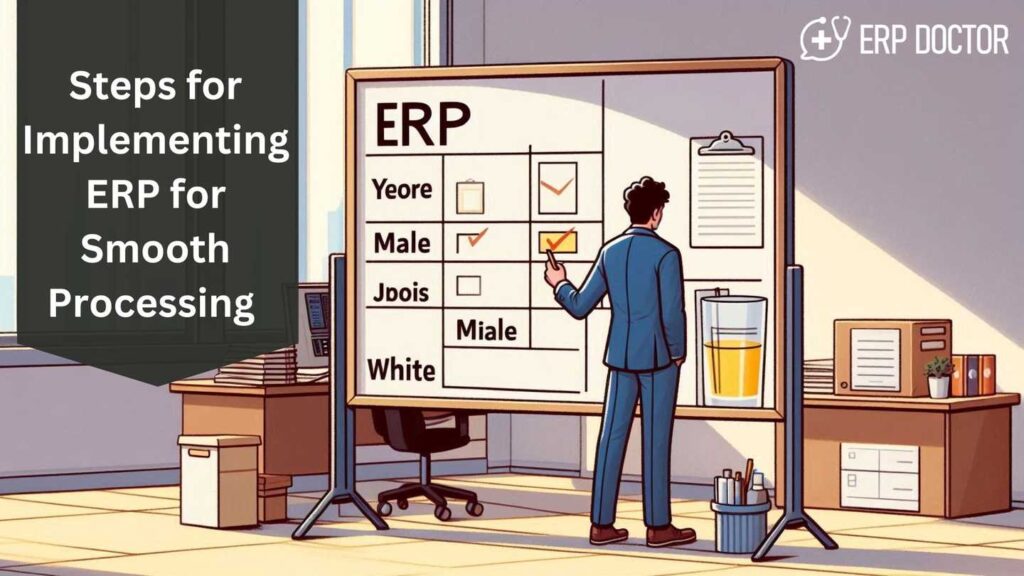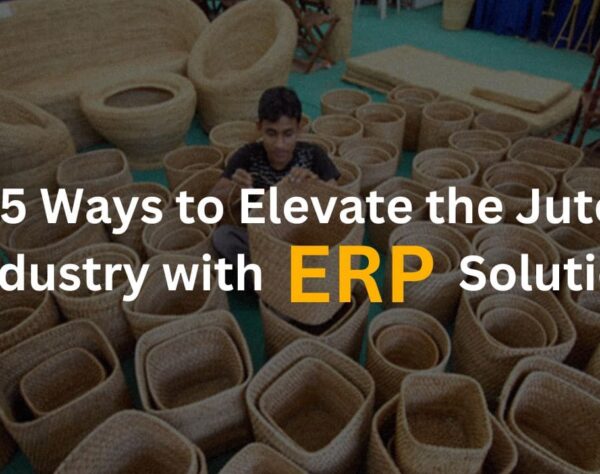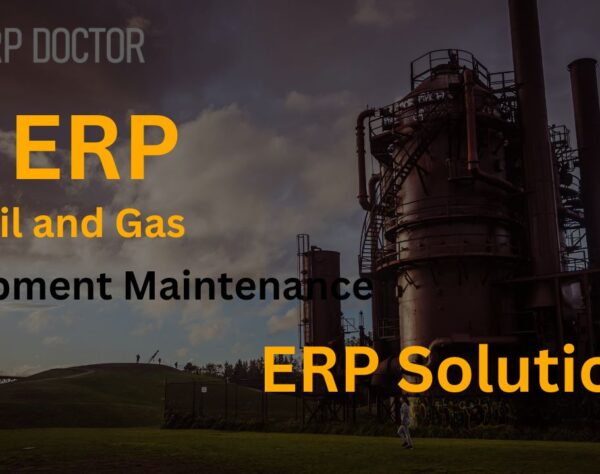
Steps for Implementing ERP for Smooth Processing

Learn the Best ERP Implementing Strategies and Tips
Implementing ERP systems, such as SAP Business One, can significantly enhance business operations. To ensure a successful ERP implement, it’s crucial to follow a systematic approach that includes defining clear objectives, assembling a strong project team, and selecting the right solution. This blog will guide you through the key steps for a smooth ERP implement, highlight the benefits, and provide tips on avoiding common pitfalls to maximize your system’s effectiveness.
1. Define Clear Objectives
Before diving into the ERP implementation process, it’s essential to establish clear objectives. Identify the specific goals you want to achieve with the ERP system. These could include improving operational efficiency, reducing costs, enhancing customer service, or gaining better insights into business performance. Defining clear objectives will guide your decision-making process and help in evaluating the success of the implementation.
2. Assemble a Strong Project Team
A successful ERP implementation requires a dedicated project team. Assemble a team that includes key stakeholders from various departments, such as finance, operations, IT, and human resources. Ensure that the team has a clear understanding of the business processes and ERP requirements. Assign roles and responsibilities to each team member to ensure effective communication and coordination throughout the project.
3. Conduct a Thorough Needs Analysis
Conduct a comprehensive needs analysis to understand your organization’s specific requirements. This involves reviewing current business processes, identifying pain points, and determining the features and functionalities needed in the ERP system. Engaging with end-users during this phase can provide valuable insights into their needs and expectations.
4. Choose the Right ERP Solution
Selecting the right ERP solution is crucial for a successful implementation. Evaluate various ERP systems based on factors such as functionality, scalability, integration capabilities, and vendor support. Consider the unique needs of your industry and organization when making your decision. It’s also beneficial to seek input from your project team and end-users to ensure the chosen ERP solution aligns with your objectives.
5. Develop a Detailed Implementation Plan
Create a detailed implementation plan outlining the project timeline, milestones, and resources required. The plan should include key phases such as system configuration, data migration, testing, and training. Establish a realistic timeline and allocate resources accordingly to avoid delays and ensure a smooth implementation process.
6. Ensure Data Accuracy and Migration
Data migration is a critical aspect of ERP implementation. Ensure that your data is accurate, complete, and properly formatted before migrating it to the new system. Conduct thorough testing to identify and resolve any data issues. Consider using data migration tools and techniques to streamline the process and minimize errors.
7. Provide Comprehensive Training
Training is essential to ensure that your team can effectively use the new ERP system. Develop a comprehensive training program that covers all aspects of the ERP system, including system navigation, process changes, and reporting. Provide ongoing support and resources to help users adapt to the new system and address any challenges they may encounter.
8. Test and Validate the System
Before going live, conduct thorough testing of the ERP system to ensure it meets your requirements and functions as expected. Perform various tests, including functional testing, integration testing, and user acceptance testing. Validate that the system integrates seamlessly with other applications and that all processes are working correctly.
9. Go Live and Monitor Performance
Once the system has been tested and validated, it’s time to go live. Monitor the system’s performance closely during the initial phase to address any issues promptly. Establish key performance indicators (KPIs) to track the system’s effectiveness and ensure it aligns with your objectives. Regularly review performance metrics and gather feedback from users to make necessary adjustments and improvements.
10. Review and Optimize
ERP implementation is an ongoing process. Continuously review and optimize the system to ensure it remains aligned with your business needs. Stay informed about updates and new features offered by your ERP vendor. Regularly assess the system’s performance and make improvements as needed to maximize its benefits.
Benefits of a Successful ERP Implementation
- Improved Efficiency: Streamlines business processes and reduces manual tasks, leading to increased productivity.
- Enhanced Data Accuracy: Provides a centralized database that reduces data duplication and errors.
- Better Decision-Making: Offers real-time insights and analytics to support informed decision-making.
- Increased Visibility: Provides a comprehensive view of business operations, helping to identify trends and opportunities.
- Scalability: Supports business growth by allowing for easy integration of additional modules and functionalities.
Avoiding Common Pitfalls in ERP Implementing
- Lack of Clear Objectives: Without clear goals, it’s challenging to measure success and stay focused.
- Inadequate Training: Insufficient training can lead to user frustration and decreased system adoption.
- Poor Data Migration: Inaccurate or incomplete data migration can cause significant issues post-implementation.
- Ignoring Change Management: Failing to manage organizational change can hinder the adoption of the new system.
Successfully implementing an ERP solution such as SAP Business One requires careful planning and execution, from defining objectives to ongoing optimization. By understanding the benefits of SAP Business One and proactively addressing potential pitfalls, organizations can harness its full potential for improved efficiency, data accuracy, and informed decision-making. Embracing these strategies will lead to a more streamlined and effective business operation.
Ready to Optimize Your ERP Systems? Visit ERP Doctor for Comprehensive Solutions and Support!
Want to speak to an expert? Fill in the form below, and we will be in touch with you shortly!





